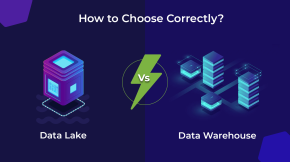Insurance Analytics: Use Cases And Benefits
The insurance industry is intrinsically a risky industry. Among the most challenging issues faced by the industry include traversing complex claims processes, placement and marketing, risk mitigation, funds repression, environmental disasters, and enforcing adherence.
Due to the enormous amount of data collected every day in this sector, insurance firms have traditionally relied on statistical data to guide their decisions.
By incorporating advanced analytics for meeting their business objectives, the insurance sectors have undergone a fundamental change in the way they operate.
Big data can also be mined using analytics tools to uncover practical insights that can be applied to a wide range of business applications. Insurance companies increased the use of cutting-edge data analysis to safeguard their operations against risks and also spot untapped market niches.
The insurance industry must embrace the era of digital transformation if they are to profit from the wealth of data created online. That’s where Insurance Analytics Use Cases include client information, product specifications, pricing, and underwriting procedures.
Insurers need to upgrade their digital strategy because of increased competition, stronger regulatory and privacy laws, and changing customer demand patterns.
Insurers stay competitive by concentrating on excellent data management and transforming that data into meaningful insights for data-driven choices.
Insurance firms must focus on how to use previously untapped data to improve data intelligence in insurance. As per a study by McKinsey Global Institute, data-driven firms are 23 times more likely to win clients than their competitors.
New competitors join the fray every day, each having a data mine, but only those who can turn that data into meaningful insights can turn it into a gold mine.
In the post-PC era, insurance professionals relied on complicated spreadsheets to navigate customer profiling.
However, the accuracy of this method of data reporting is questionable, since conventional technologies make the task tedious and time-consuming, and prone to errors.
To avoid the risk of data inaccuracies, insurance companies must expedite data flow and have reliable analysis and automated insights to have a complete picture of their portfolio.
For this reason, most contemporary insurance agencies use Power BI dashboards since they have a high potential to decrease risk.
Insurance executives benefit from having all this data in one place. Data is accumulated from several sources, including CRMs, claims management systems, and customer service tools. These systems must connect the data collected into user-friendly and valuable reports.
Advantages of Insurance Analytics Use Cases
The right type of analytics helps insurance firms highlight large amounts of data from accident statistics and personal policyholder information. Analytics assists 3rd party sources in several ways such as:
- Prioritize distinct risk categories
- Minimize forgery losses and save costs.
- It enables underwriters and agents to make quick, educated judgments from their preferred place or machine, reducing overall decision-making time.
Therefore, we can say that data intelligence in insurance helps organizations make better decisions in numerous aspects of their enterprise. Some of the biggest advantages include:
1. Speedy Claims Assessment
Advanced analytics create a logical link for adequate movement of data that becomes more critical with the increasing use of mechanization, modifications in guidelines from the government and insurance companies, and an increased amount of data to sift through for individual claims.
2. Accurate Risk Identification
Risk analysis tools allow companies to react quickly to changing risk environments as inherent in an insurance firm’s business model.
When analyzing risks, insurers verify customer information. The company then separates customers into distinct categories based on subjective and objective information. Insurance Analytics tools leverage data sources like social networks, submitted documentation, credit reports, and criminal records.
They then compile the data into a customer profile.
These profiles are compiled into a comprehensive data visualization dashboard that provides insights and precise designation of the high, medium, and low-risk profiles.
3. Product Profitability Assessment
Putting consumers first is now a necessity for businesses looking to expand in the technological environment, not just a point of differentiation.
Businesses leverage vast amounts of easily-accessible user data to comprehend the necessities and predilections of their customers.
Insurance Analytics tools aid in the investigation of insured products by analyzing the product’s performance, process, and production product data categorized by distribution medium, geography segment, and other variables.
A BI procedure will examine the product’s premium update, its claims, lapsation, and other factors in real time.
4. Revenue Analysis
To make an in-depth examination of a single product easier, Insurance Analytics dashboards showcase cost analysis, conversion ratios, and retention ratios. Keeping track of these numbers bypasses underwriting overruns and ensures profitability.
5. Improved Process Mechanization
Insurance Analytics tools automate data entry, adherence checks, and redundant jobs to improve operational processes. You can automate back-office activities and consumer-facing benefits with RPA technologies.
6. Enhanced Decision Making
By tracking underwriting, product development, sales, and services claim processing, and other parts of an insurance organization, data analysis tools deliver visual report insights and provide insurance businesses with helpful information.
7. Increased Customer Satisfaction
Using analytics, you can digitally save comments from potential clients and draw practical insights into their purchasing behavior, preferences, and lifestyle patterns. These business intelligence insights improve the customer experience.
Top 5 Uses of Business Analytics in Insurance
Business Analytics can have a significant impact on an Insurance company’s outcomes:
1. Pricing and Service Improvement
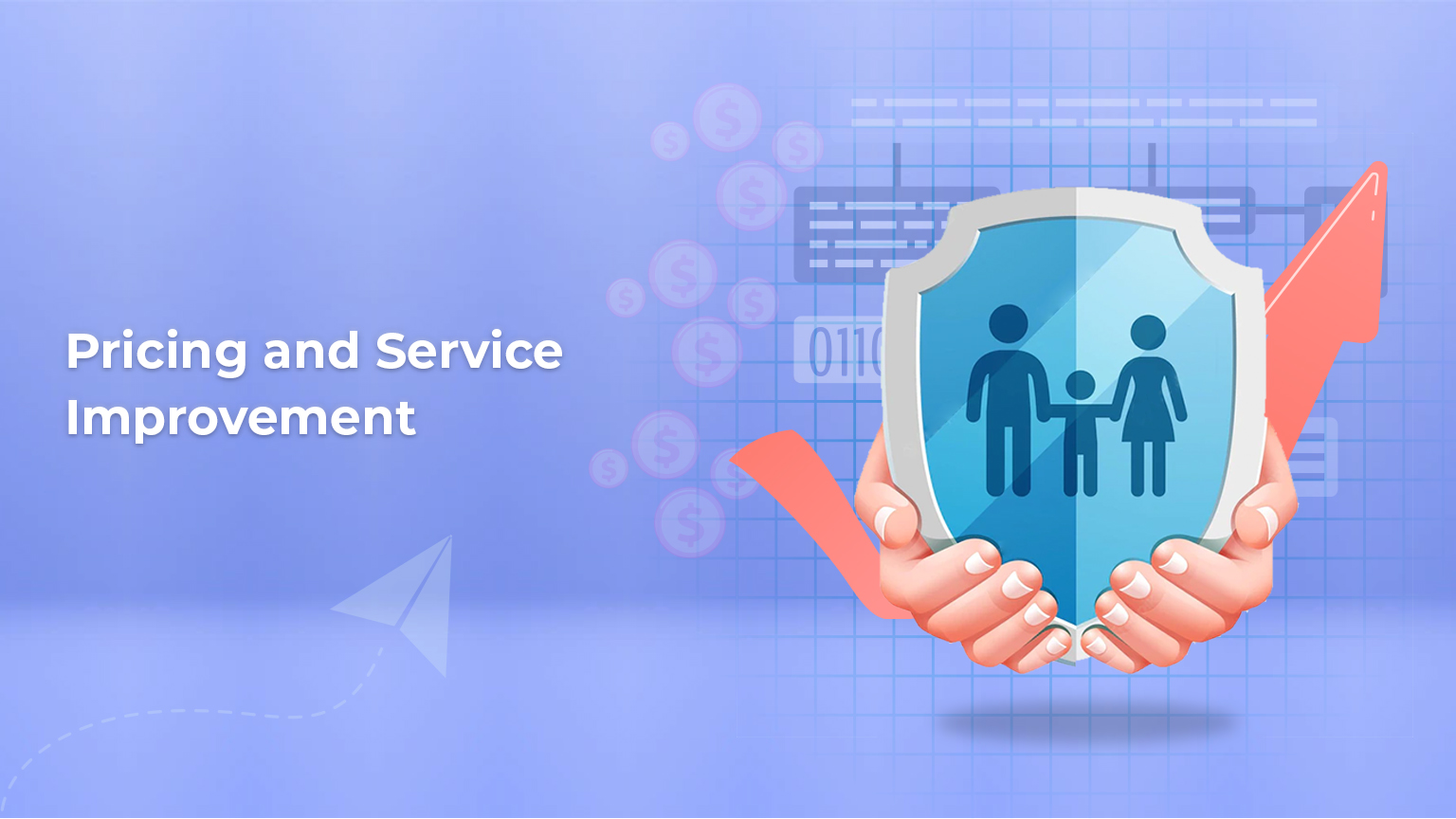 Traditional insurance providers must quickly innovate beyond their core services to respond to customer needs, while also developing cutting-edge products and providing first-rate customer service.
Traditional insurance providers must quickly innovate beyond their core services to respond to customer needs, while also developing cutting-edge products and providing first-rate customer service.
AI-assisted instantaneous claims disbursement improves user experiences and reduces operational expenses.
Innovative insurance technology companies use automation, virtual assistants, and predictive analysis to process enormous amounts of client data. The data assists customer service staff in quickly settling claims, as well as keeping them in touch with their clients.
For insurance businesses, the capacity to assess risk and define pricing policies becomes a fundamental source of revenue generation. Data analytics enables actuaries to create customized policies that match changing business demands, market conditions, and risk concentrations.
You can also promote more appropriate insurance offerings by evaluating:
- Consumer behavior,
- Lifestyle,
- Pricing sensitivity, and
- Buying preferences.
Customizing policy at the individual level was previously challenging. Thanks to advances in technology, insurance providers can now adopt more dynamic pricing models based on clients’ behavioral signals, risk indicators, and needs.
2. Management of Risk
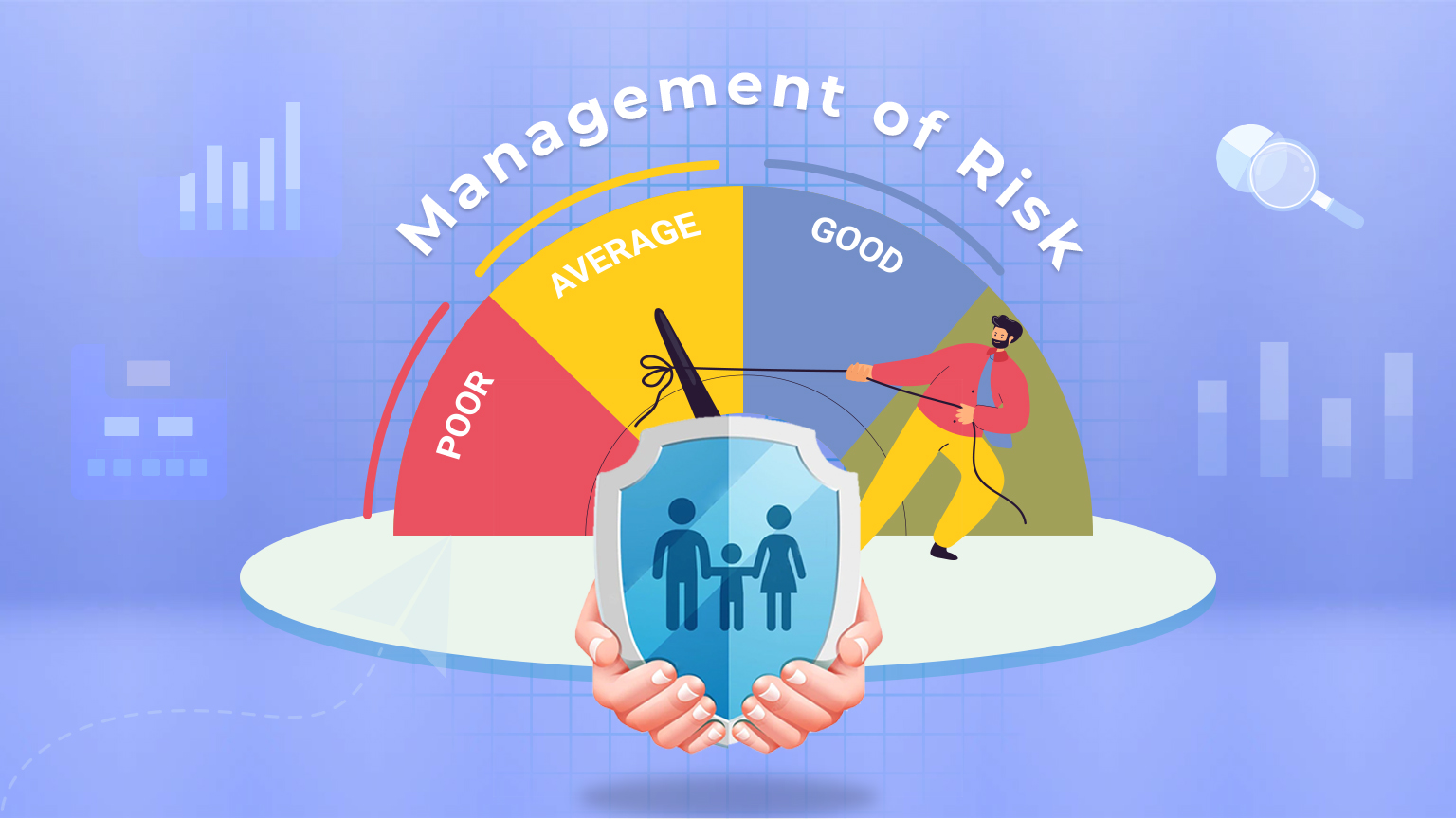 Sophisticated data intelligence in insurance supports real-time risk analysis. It allows businesses to become more potent in a volatile environment by detecting, analyzing, and mitigating the issue.
Sophisticated data intelligence in insurance supports real-time risk analysis. It allows businesses to become more potent in a volatile environment by detecting, analyzing, and mitigating the issue.
Insurance data analytics enables you to complete risk assessments by integrating all of your data from internal and external sources into one solution. For example, credit organizations, user forums, customer emails, 3rd party providers, and social media all provide historical data.
Previously, underwriters had to rely on profile and scoring models that are:
- Precise,
- Have set criteria, and
- Are basic statistical models
Data analytics services aid in detecting potentially dangerous claims and their submission to authorities for further investigation.
3. Prediction of Lifetime Value
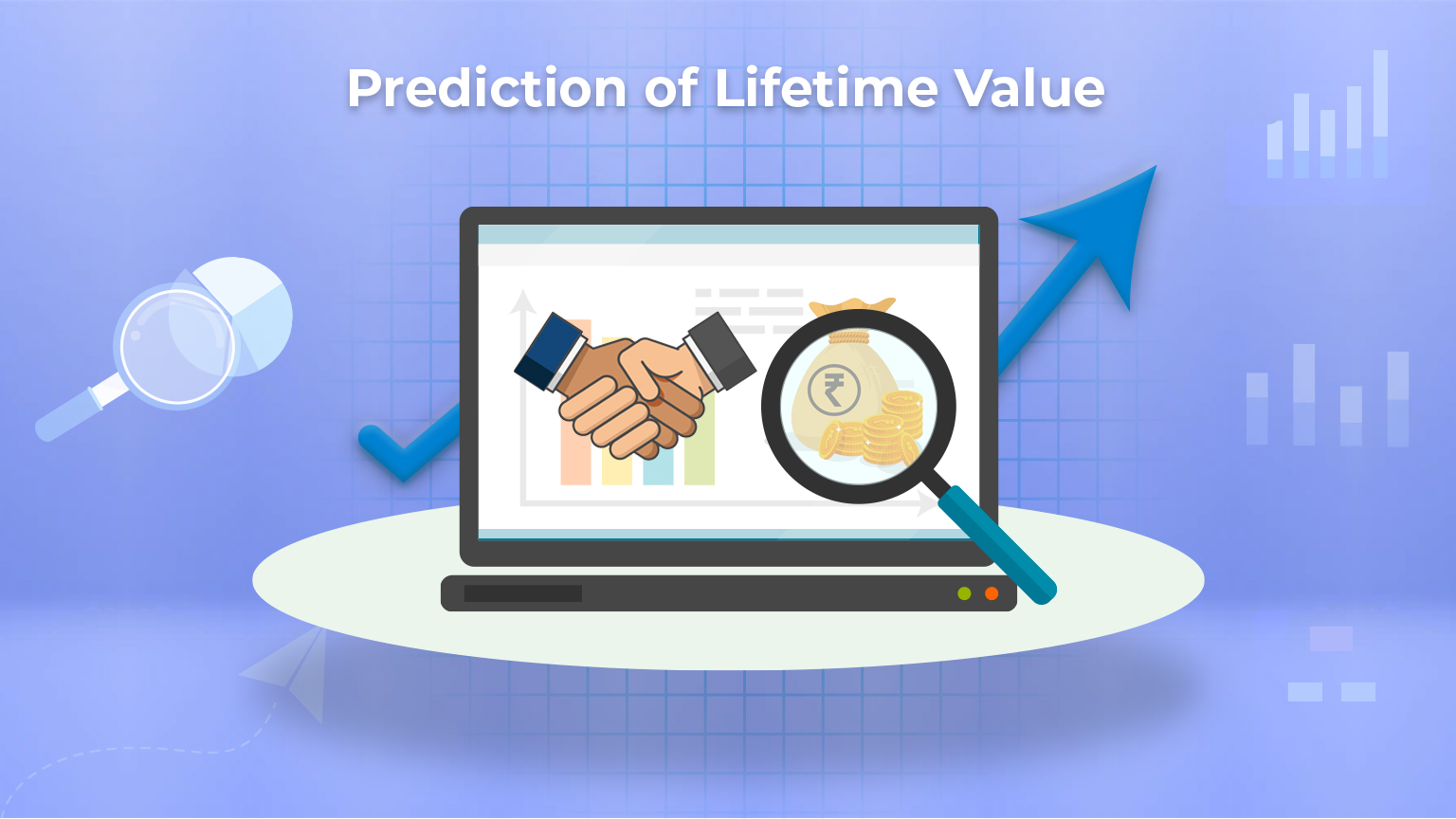 Customer lifetime value (CLV/CLTV) is a crucial revenue metric for insurance firms. Insurance marketers also use CLV data to segment their existing user base and better assess the efficacy of real-time marketing initiatives.
Customer lifetime value (CLV/CLTV) is a crucial revenue metric for insurance firms. Insurance marketers also use CLV data to segment their existing user base and better assess the efficacy of real-time marketing initiatives.
Data analytics show businesses how much money they’ll make and how much money they’ll spend throughout a customer’s future relationship.
For insurance businesses, Insurance analytics use cases and customer behavior data forecast the CLV and predict the customer’s profitability. Cross-buying and retention.
4. Detection of False Claims
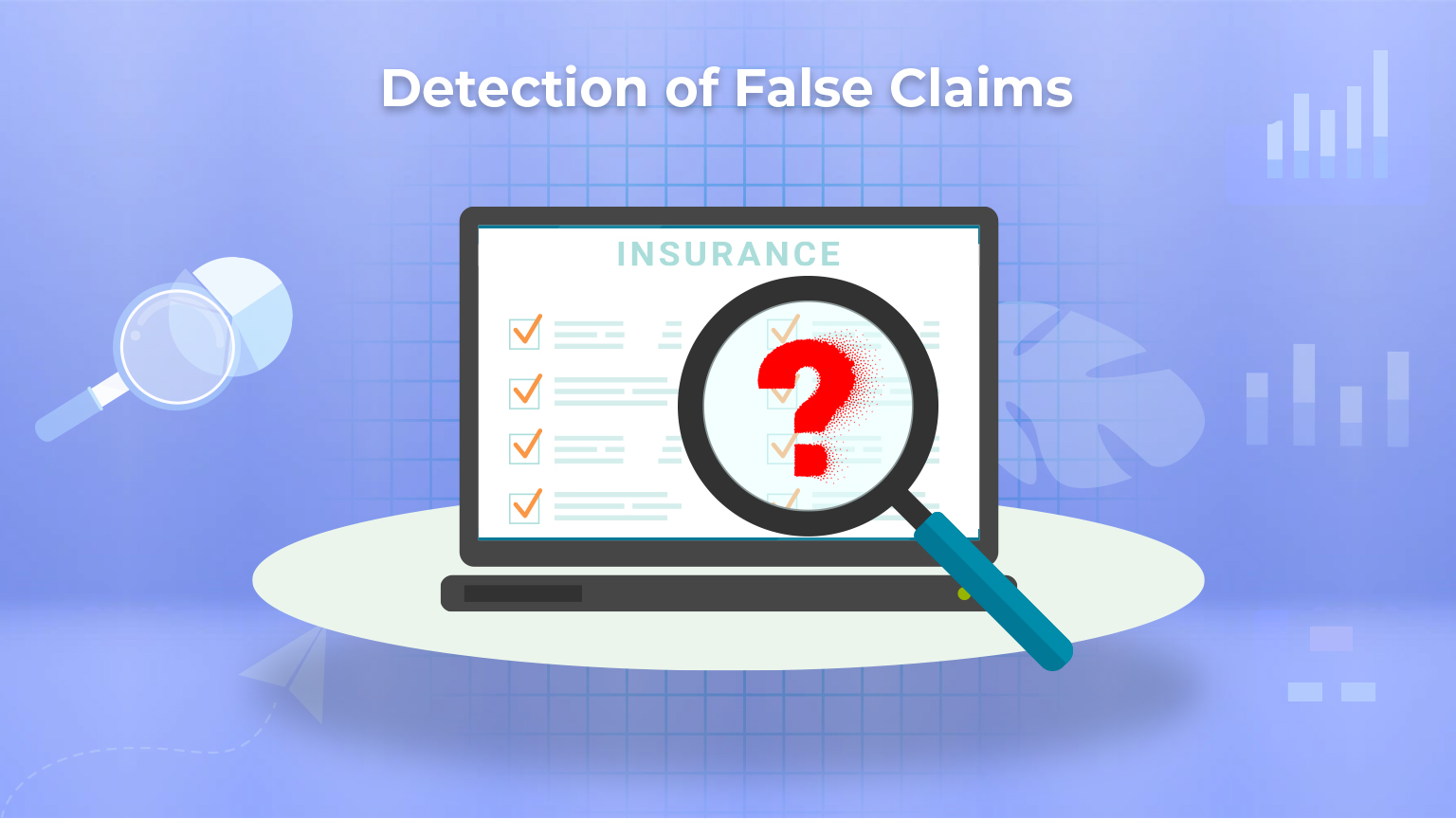 The industry has a significant issue with claim processing fraud. According to research, 10% of all claims are false.
The industry has a significant issue with claim processing fraud. According to research, 10% of all claims are false.
Using predictive analytics, it is possible to discover questionable claims, and fraudulent actions based on behavioral patterns.
The fraud protection system halts the claim process and suggests a case inquiry every time a claim submitted by an individual with a record of fraudulent claims is found. Different types of forgery and bogus claims are analyzed using predictive modeling approaches.
5. Customized Campaigns for Marketing
 Cutting-edge analytics pull database information including demographics, hobbies, interests, the system of beliefs, lifestyle details, interests, and more. This enables insurance companies to create individualized proposals, guidelines, compliance programs, and consumer recommendations.
Cutting-edge analytics pull database information including demographics, hobbies, interests, the system of beliefs, lifestyle details, interests, and more. This enables insurance companies to create individualized proposals, guidelines, compliance programs, and consumer recommendations.
The information gathered from numerous digital platforms aids in the development of a prototype for customization and marketing initiatives. As a result, tailoring services, guidelines, expenditures, and even marketing campaigns become a possibility.
Conclusion
The insurance sector historically used chronological data to estimate the possibility that potential risks will materialize in the long term. Data gathered at every stage of the client journey can be digitized to improve all company operations.
The enormous amount of data available to insurance companies today can be utilized to support past data. They can develop a greater grasp of the user experience and possible risks by combining the data.
Insurance companies are gaining the perspectives they require to personalize services, enhance efficiency, and make effective business strategy company decisions with the help of insurance analytics use cases.
Also, advancing technology creates more value across the insurance valuation chain by implementing data analysis of this information.
Data intelligence in insurance provides deep insights from big data in insurance-related transactions such as underwriting, claims management, customer satisfaction, and policy administration.
Insurance analytics use cases offer a superior predictive analysis that helps firms show analytical decision-making in their internal procedures and transactions.
There has never been a greater need to use analytics, and the benefits underlined in this post are testimonials to this fact.








 Traditional insurance providers must quickly innovate beyond their core services to respond to customer needs, while also developing cutting-edge products and providing first-rate customer service.
Traditional insurance providers must quickly innovate beyond their core services to respond to customer needs, while also developing cutting-edge products and providing first-rate customer service. Sophisticated data intelligence in insurance supports real-time risk analysis. It allows businesses to become more potent in a volatile environment by detecting, analyzing, and mitigating the issue.
Sophisticated data intelligence in insurance supports real-time risk analysis. It allows businesses to become more potent in a volatile environment by detecting, analyzing, and mitigating the issue. Customer lifetime value (CLV/CLTV) is a crucial revenue metric for insurance firms. Insurance marketers also use CLV data to segment their existing user base and better assess the efficacy of real-time marketing initiatives.
Customer lifetime value (CLV/CLTV) is a crucial revenue metric for insurance firms. Insurance marketers also use CLV data to segment their existing user base and better assess the efficacy of real-time marketing initiatives. The industry has a significant issue with claim processing fraud. According to research, 10% of all claims are false.
The industry has a significant issue with claim processing fraud. According to research, 10% of all claims are false. Cutting-edge analytics pull database information including demographics, hobbies, interests, the system of beliefs, lifestyle details, interests, and more. This enables insurance companies to create individualized proposals, guidelines, compliance programs, and consumer recommendations.
Cutting-edge analytics pull database information including demographics, hobbies, interests, the system of beliefs, lifestyle details, interests, and more. This enables insurance companies to create individualized proposals, guidelines, compliance programs, and consumer recommendations.









